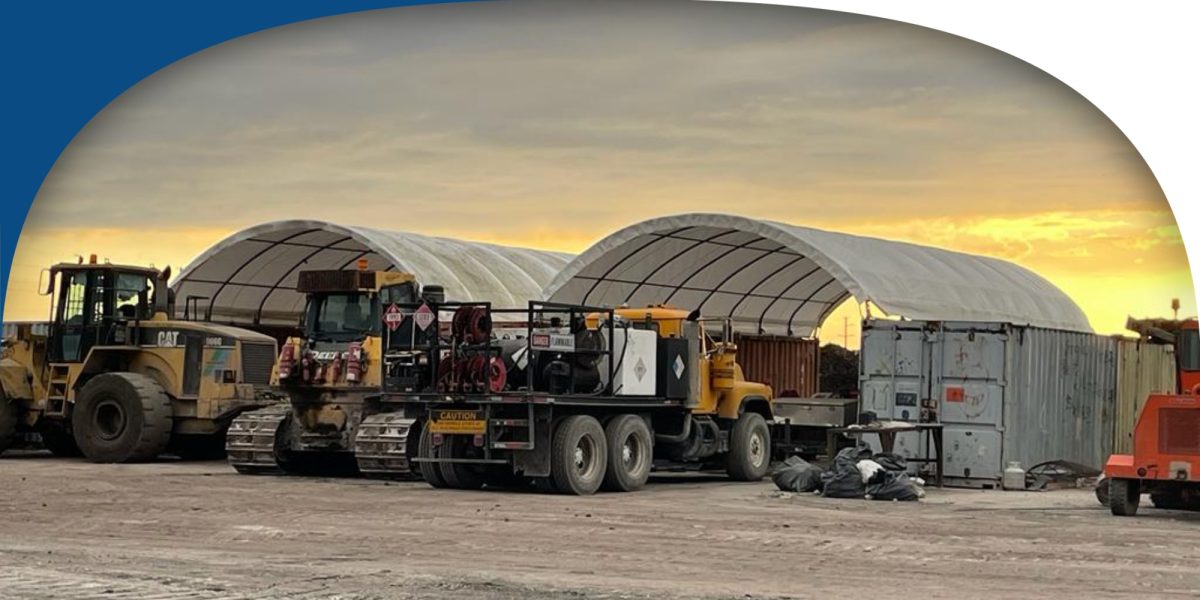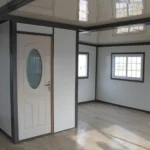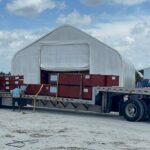How Shipping Container Covers Protect Your Assets and Maximize Space
If you’re looking for a cost-effective way to protect your assets, shipping container covers offer a versatile and durable solution. Whether you’re using shipping containers for storage, workspaces, or temporary shelters, adding a cover maximizes their functionality while shielding your equipment or goods from harsh weather conditions. In this post, we’ll break down shipping container covers, how they work, and why they could be the best investment for your needs.
-
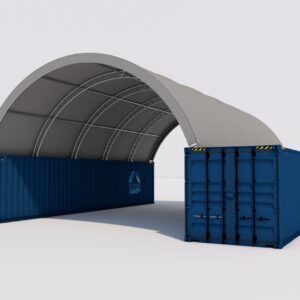 Shipping Container Sheds
Shipping Container Sheds
26W-40L- 10H (ft)
Double Truss$5,720.00 -
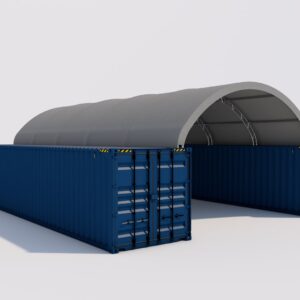 Shipping Container Shed
Shipping Container Shed
20W-40L- 6.5H (ft)
Double Truss$4,399.00 -
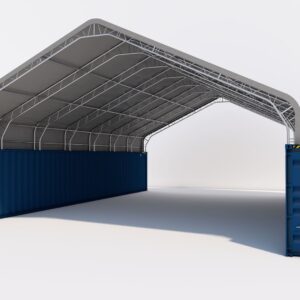 Hoop Barn
Hoop Barn
40W-60L-15H (ft)
Double Truss Peak$9,999.00 -
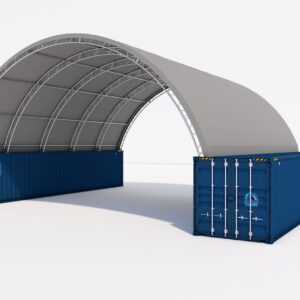 Container Shelter
Container Shelter
40W-40L-15H (ft)
Double Truss Dome$5,850.00 – $5,999.00 -
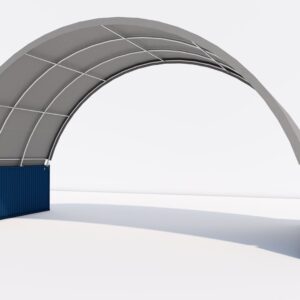 Shipping Container Canopy
Shipping Container Canopy
40W-20L-15H (ft)$3,490.00 -
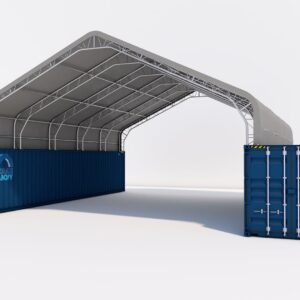 Kwanzaa Hut
Kwanzaa Hut
33W-40L-10H (ft) Peak Double Truss$5,500.00 -
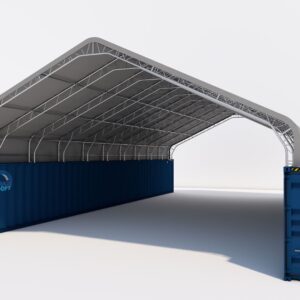 Hoop Buildings
Hoop Buildings
40W-80L-15H (ft)
Double truss Peak$11,200.00 -
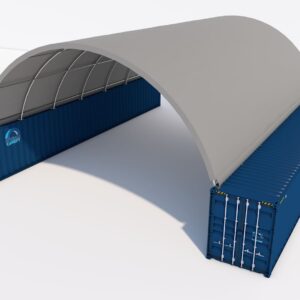 Shipping container roof
Shipping container roof
40W-60L-15H (ft)
Single truss$7,380.00 – $7,420.00 -
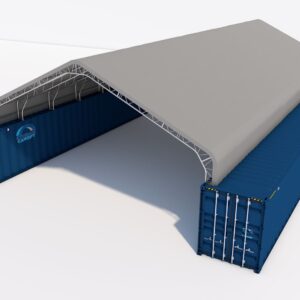 Container Shelters
Container Shelters
60W-80L-15H (ft)
Double Truss$25,490.00
What Are Shipping Container Tarps?
Shipping container covers are structures made from durable materials such as polyethylene or PVC, designed to stretch over and between shipping containers. They transform shipping containers into secure storage spaces, garages, workshops, or even temporary shelters. By providing overhead protection, they enhance the container’s ability to keep your assets safe from rain, snow, and UV damage.
Why Shipping Container Covers Are a Smart Investment
1. Weather Protection for Your Goods
One of the main reasons businesses invest in shipping container covers is to ensure their goods and equipment are protected from the elements. Weather can cause significant damage over time, including rust and decay, but a cover helps shield your containers and what’s inside from exposure to rain, sun, and snow.
You may be interested: Fabric building A versatile alternative
2. Affordable Compared to Permanent Structures
A shipping container cover is much more affordable than building a permanent structure. Whether you’re in construction, agriculture, or manufacturing, it’s a cost-effective way to protect your assets without paying for a full-scale warehouse or garage. You still get ample protection but at a fraction of the price.
3. Increased Flexibility
Container covers are highly versatile. You can use them to create additional storage space, vehicle shelters, or even temporary workstations. The best part is that they are easy to install and can be moved or reassembled as your needs change, making them the perfect solution for both permanent and temporary setups.
4. Extend the Lifespan of Containers
When containers are exposed to harsh weather without additional protection, they degrade faster. Rust, water damage, and UV rays can take a toll on the structure. With a quality shipping container cover, you are significantly prolonging the life of your containers and their contents.
Different Types of Shipping Container Covers
Depending on your specific needs, there are different types of shipping container tarps to consider:
1. Flat Roof Container Covers
Flat roof covers are basic and cost-effective, ideal for those who need weather protection but don’t require additional vertical space. These are great for storage containers and general-purpose shelters.
2. Dome Roof Container Covers
Dome or arched covers provide more vertical space and improve airflow and water runoff. This makes them suitable for equipment storage, vehicle shelters, or even workshops.
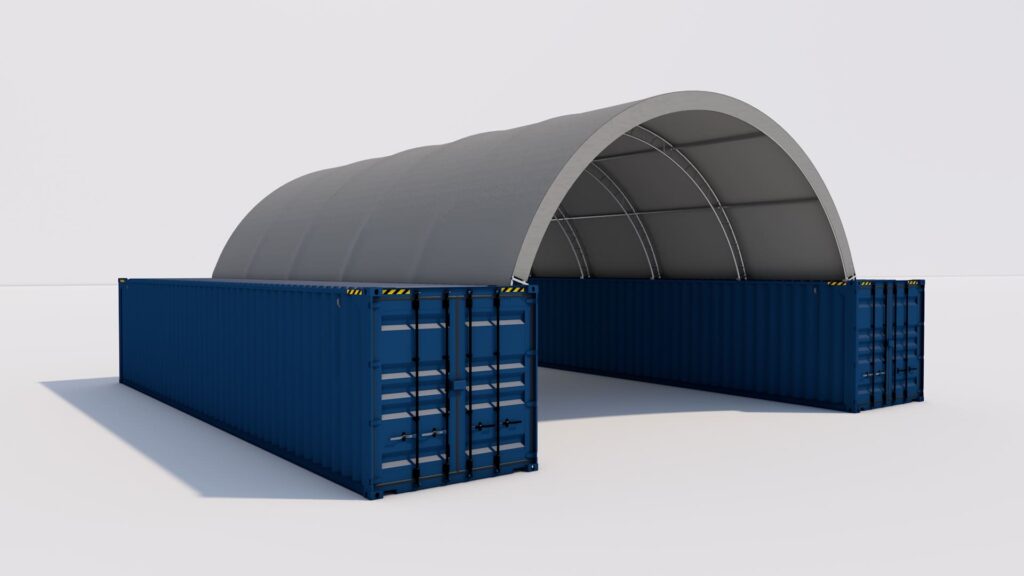
3. Expandable Covers
Some container roof covers can be expanded to accommodate multiple containers. This flexibility is ideal for businesses that require scalability and need to adapt their storage solution over time.
Best Applications for Container shelters
1. Storage for Equipment and Goods
Container roof covers create a sheltered space that protects machinery, tools, and goods from environmental damage, extending their usability.
2. Workshop and Workspace Shelters
For businesses that operate outdoor workshops, a container cover offers the advantage of an instant workspace that’s both portable and weather-protected.
3. Agricultural Use
Farmers can use these covers to protect crops, hay, and farming equipment, ensuring they’re shielded from rain or excessive sun exposure.
Choosing the Right Container Shelter
When seleHow Shipping Container Covers Protect Your Assets and Maximize Space
If you’re looking for a cost-effective way to protect your assets, shipping container covers offer a versatile and durable solution. Whether you’re using shipping containers for storage, workspaces, or temporary shelters, adding a cover maximizes their functionality while shielding your equipment or goods from harsh weather conditions. In this post, we’ll break down what shipping container covers are, how they work, and why they could be the best investment for your needs.
What Are Container Storage Covers?
Shipping container covers are structures made from durable materials such as polyethylene or PVC, designed to stretch over and between shipping containers. They transform shipping containers into secure storage spaces, garages, workshops, or even temporary shelters. By providing overhead protection, they enhance the container’s ability to keep your assets safe from rain, snow, and UV damage.
Why Shipping Container Covers Are a Smart Investment
1. Weather Protection for Your Goods
One of the main reasons businesses invest in shipping container covers is to ensure their goods and equipment are protected from the elements. Weather can cause significant damage over time, including rust and decay, but a cover helps shield your containers and what’s inside from exposure to rain, sun, and snow.
2. Affordable Compared to Permanent Structures
A shipping container cover is much more affordable than building a permanent structure. Whether you’re in construction, agriculture, or manufacturing, it’s a cost-effective way to protect your assets without paying for a full-scale warehouse or garage. You still get ample protection but at a fraction of the price.
3. Increased Flexibility
Container covers are highly versatile. You can use them to create additional storage space, vehicle shelters, or even temporary workstations. The best part is that they are easy to install and can be moved or reassembled as your needs change, making them the perfect solution for both permanent and temporary setups.
4. Extend the Lifespan of Containers
When containers are exposed to harsh weather without additional protection, they degrade faster. Rust, water damage, and UV rays can take a toll on the structure. With a quality shipping container cover, you are significantly prolonging the life of your containers and their contents.
Different Types of Shipping Container Covers
Depending on your specific needs, there are different types of shipping container covers to consider:
1. Flat Roof Container Covers
Flat roof covers are basic and cost-effective, ideal for those who need weather protection but don’t require additional vertical space. These are great for storage containers and general-purpose shelters.
2. Dome Roof Container Covers
Dome or arched covers provide more vertical space and improve airflow and water runoff. This makes them suitable for equipment storage, vehicle shelters, or even workshops.
3. Expandable Covers
Some shipping container covers can be expanded to accommodate multiple containers. This flexibility is ideal for businesses that require scalability and need to adapt their storage solution over time.
Best Applications for Shipping Container Covers
1. Storage for Equipment and Goods
Shipping container covers create a sheltered space that protects machinery, tools, and goods from environmental damage, extending their usability.
2. Workshop and Workspace Shelters
For businesses that operate outdoor workshops, a container cover offers the advantage of an instant workspace that’s both portable and weather-protected.
3. Agricultural Use
Farmers can use these covers to protect crops, hay, and farming equipment, ensuring they’re shielded from rain or excessive sun exposure.
Choosing the Right Shipping Container Cover
When selecting a shipping container cover, consider the following factors:
- Material Quality: Ensure the cover is made from weather-resistant materials such as polyethylene or PVC to maximize durability.
- Size and Compatibility: Make sure the cover fits your container dimensions. Covers are available for single containers or multiple units, depending on your needs.
- Ease of Installation: Choose a cover that’s easy to assemble and doesn’t require specialized tools or professional installation.
Why Invest in Shipping Container Covers?
Shipping container covers provide a smart, cost-effective way to protect and enhance your shipping container’s functionality. From protecting valuable assets from the elements to creating additional workspaces, a well-chosen cover can significantly improve the utility of your shipping containers. Whether you need a temporary solution or a long-term storage fix, container covers offer the versatility and affordability that permanent structures can’t match.cting a shipping container cover, consider the following factors:
- Material Quality: Ensure the cover is made from weather-resistant materials such as polyethylene or PVC to maximize durability.
- Size and Compatibility: Make sure the cover fits your container dimensions. Covers are available for single containers or multiple units, depending on your needs.
- Ease of Installation: Choose a cover that’s easy to assemble and doesn’t require specialized tools or professional installation.
Why Invest in Shipping Container Covers?
Shipping container covers provide a smart, cost-effective way to protect and enhance your shipping container’s functionality. From protecting valuable assets from the elements to creating additional workspaces, a well-chosen cover can significantly improve the utility of your shipping containers. Whether you need a temporary solution or a long-term storage fix, container covers offer the versatility and affordability that permanent structures can’t match.


